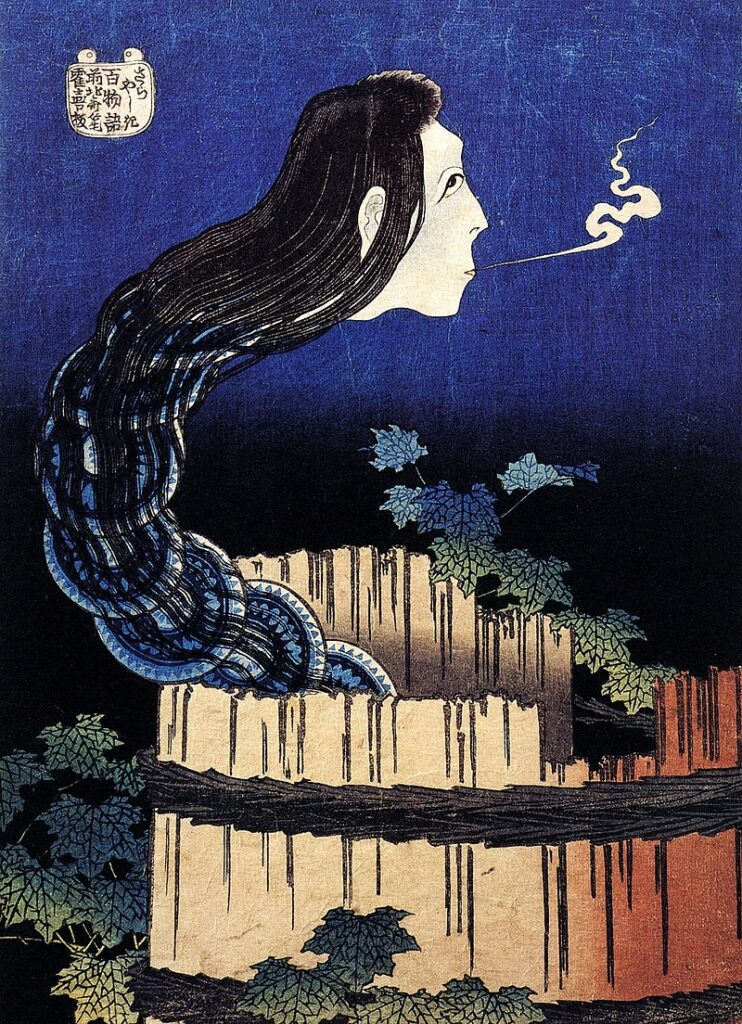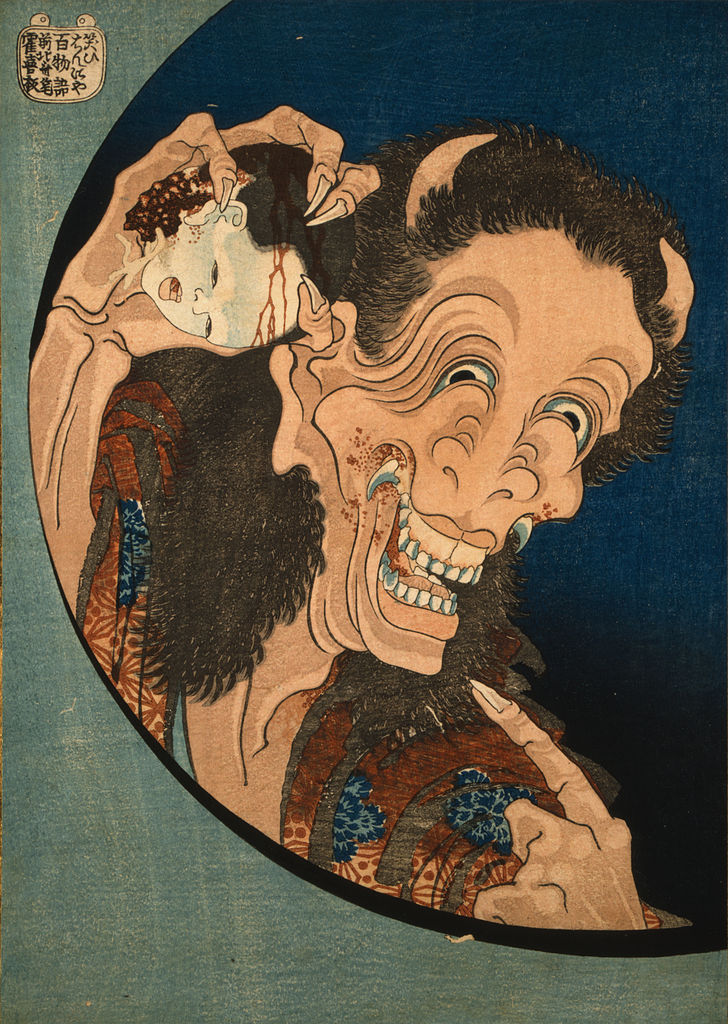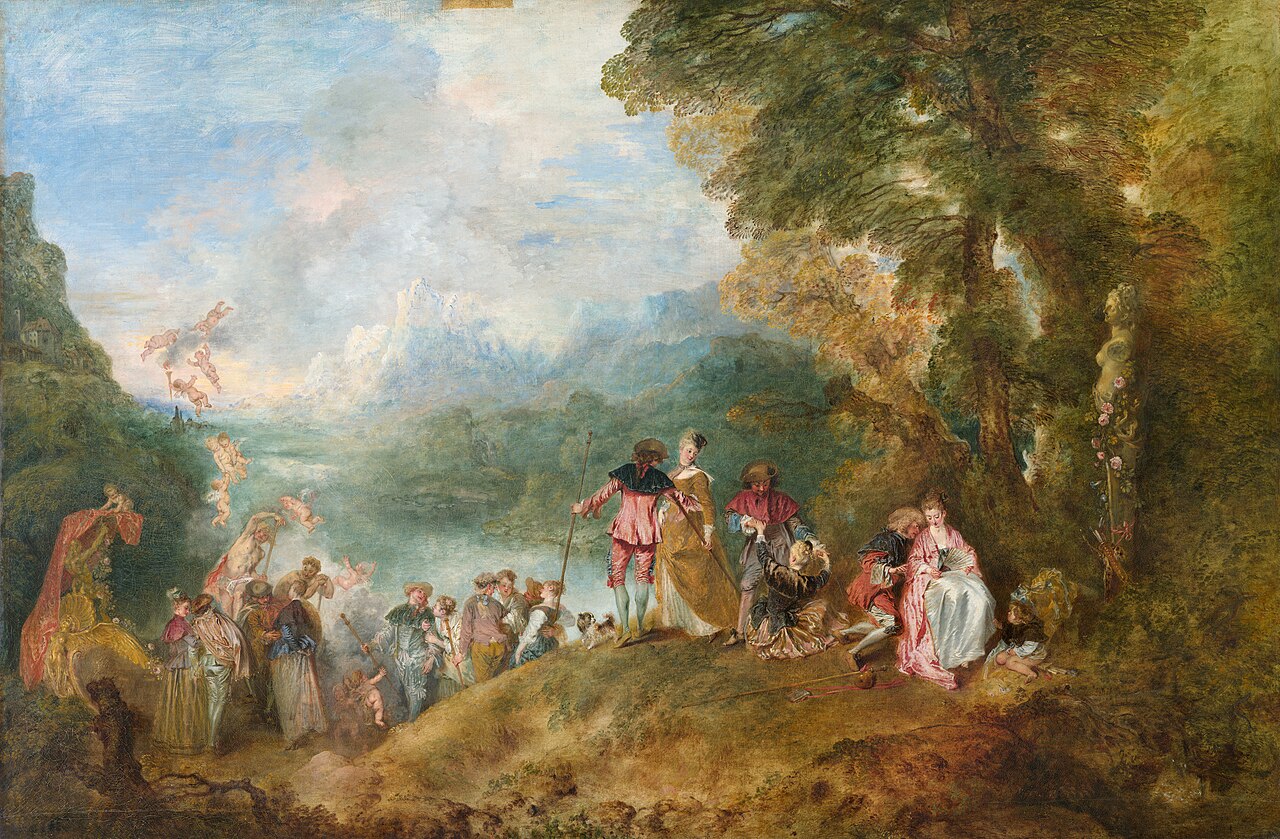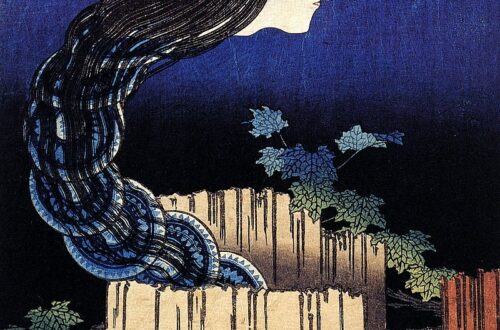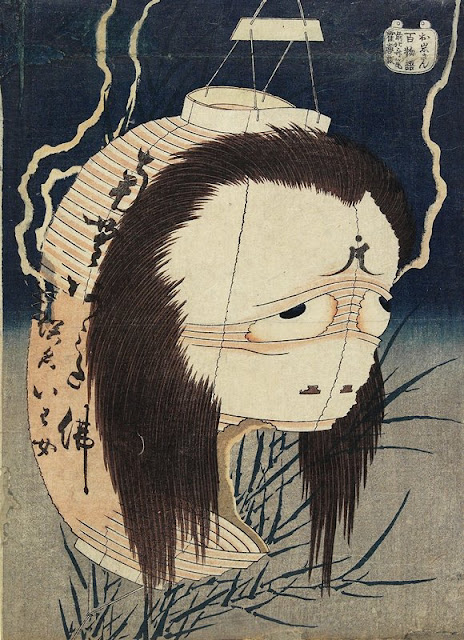
One Hundred Ghost Stories Plate III: The Ghost of Oiwa
The Ghost of Oiwa (Oiwa-san)
The third print shows the “Ghost of Oiwa“. The story of Oiwa originally was a play for the traditional Kabuki-theatre called Yotsuya Kaidan, written by Tsuruya Nanboku IV in 1825.

The most popular version is the one where a young girl named Oume falls in love with Tamiya Iemon, a rōnin who is married to his wife called Oiwa. Oume’s friends try to get rid of the wife by gifting her a poisonous face cream which ruins her face. Tamya lemon abandons his wife in disgust because her beauty is destroyed and she is a hideous sight. His actions drive her insane. In her rage she stumbles over an open sword which ended her life. She curses her husband with her last breath and starts to haunt him mercilessly. She takes on various forms, including a paper lantern1. The play Tokaido yotsuya kaidan was a huge success and several prints were made in the aftermath, among them Hokusai’s version:
“Hokusai’s print, from 1830, emphasizes the poisonous deformity suffered by Oiwa, showing her in the form of a lantern—one of the numerous shapes she assumed to torment her husband. Her hair grows out of the lantern, hanging long and limp against the white paper, and her eyes and mouth have formed from holes burnt in the paper by the growing flames. Her eyes droop to the sides and her mouth gapes, fixed in a terrible expression of rage and misery.”2
The floating paper lantern with the face of Oiwa is a ruined thing with holes in it. One big hole forms the gap of a howling mouth. Two small holes are nostrils and above all the creases form the sad eyes of the betrayed woman. According to Kassandra Diaz, the syllable on her forehead refers to Gobujo, a form of Yama, the lord of the underworld and judge of the dead. Wisps of smoke are rising through holes in her back. Behind the lantern-woman we can see wild grass growing. The inscription on the lantern says: „Praise Amida / The Woman Named O-iwa“.
Hokusai’s interpretation of the play and the story served as an ioonspiration for other artists, such like Shunbaisai Hokuei or Utagawa Kuniyoshi.



Here are some other examples of illustrations of the popular story:



Read more about Hokusai’s Ghost prints:
- Paper lanterns were used in the Buddhist tradition mukae-bon, the beginning of Obon; people bring the lanterns to their family member’s graves to welcome their spirits. In Hokusai’s print ghost of Oiwa possessed a lantern, in accord with a belief of the lantern usage for communication with ancestral spirits. On the lantern there is an inscription: „Praise Amida / The Woman Named O-iwa“. The calligraphy is written in choshin style, which is not typical of that used for paper lanterns. Kassandra Diaz writes that: „The creases of the lantern fold over her exhausted eyes, which point to the Buddhist seed syllable on her forehead. The syllable refers to Gobujo, a form of Yama, the lord of the underworld and judge of the dead. This may be a mark bestowed upon Oiwa by Yama, who punished her by returning her to the world in her „new body“.“ (Source: Wikipedia) ↩︎
- Sara L. Sumpter, From Scrolls to Prints to Moving Pictures: Iconographic Ghost Imagery from Pre-Modern Japan to The Contemporary Horror Film, p. 16, in: Explorations: The Undergraduate Research Journal, 2006 ↩︎



